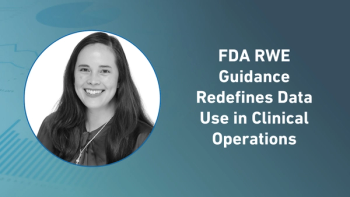
Rare Diseases Don't Feel So Rare to Me
With sixty million Americans and Europeans diagnosed with one or more of 7,000 defined rare diseases, the availability of treatments has been less than expected.
As we recognize the 10th Rare Disease Day, I find myself reflecting on where we were a year ago and hoping that some progress has been made in terms of treatment options and the availability of and processes for clinical trials.
Let’s first review the numbers. As of today, the US National Institutes of Health lists
With these numbers, it does not surprise me that my family, close friends, acquaintances and colleagues have all been impacted by rare diseases. In some cases there were approved treatments that allowed a young life to be prolonged, in another case clinical trials are commencing, and in another case, the diagnosis remains elusive but there is hope that it will be forthcoming and treatment will be available.
The fact remains that treatment options are lacking for the majority of rare disease patients. As of now, the estimate is that only around five percent of rare disorders have a treatment available. Great strides have been made in past several years. We have enzyme replacement therapies for patients with inherited metabolic disorders, disease modifying therapies for rare respiratory and neurologic disorders, and most recently, a therapy for infants with spinal muscular atrophy. All of this good news for sure, but there is clearly much more work to be done.
It takes a village
I find myself wondering what is it that I could do to help move the field of rare disease clinical research forward. I am not a bench scientist, nor am I a venture capitalist or business person, so discovery and funding are outside my area of expertise. However, I do have some knowledge of clinical development strategy, understanding of medical practice, a long-standing involvement in clinical research, and a personal and professional interest in advancing rare disease clinical research. The biggest advantage I have is being associated with a talented group of professionals at QuintilesIMS who are experts in clinical research delivery and are available to assist in moving this field forward. These are some of the issues surrounding rare disease clinical research we feel we can impact positively:
- Finding clinical trial patients and matching them and their physicians to an appropriate clinical trial by utilizing big data from a variety of sources (e.g., electronic medical records, labs, physician prescribing information), sophisticated analytics and in some cases machine learning algorithms to identify patients.
- Including patients, families and advocacy groups in the clinical trial planning process sooner.
- Upskilling or training relatively clinical trial naïve investigators because they are the ones that are treating the patients we have identified.
- If the treating physician is not the investigator, getting that patient to a clinical trial site efficiently and with minimal disruption to the patient and/or their family.
- Developing processes and procedures to transfer patients across country lines, including communicating with Investigational Review Boards and ethics committees, having appropriate translations of critical documents and assisting patients in a culturally sensitive manner.
- Training our staff in the principles of rare disease clinical research.
- Helping the sites who are doing our trials by being able to assist when assistance is needed because each patient is precious and any delay could prove detrimental to the patient.
- Aligning our safety and adverse event monitoring to allow for rapid review of data as it is gathered by remote data review teams.
- Understanding the urgency of the sponsor, the investigators, the sites and not least of all, the patients.
This list is far from exhaustive but the gratification is that we are learning more every day about how we can assist the scientific and medical communities in developing more treatments for more patients with these rare disorders. Thirty million Americans, and 30 million Europeans diagnosed with one of these 7,000 diseases may be labeled “rare”, but they do not seem a bit rare to me.
Cynthia Jackson, DO is Vice President and Head of the Pediatric Center of Excellence for QuintilesIMS
Newsletter
Stay current in clinical research with Applied Clinical Trials, providing expert insights, regulatory updates, and practical strategies for successful clinical trial design and execution.



